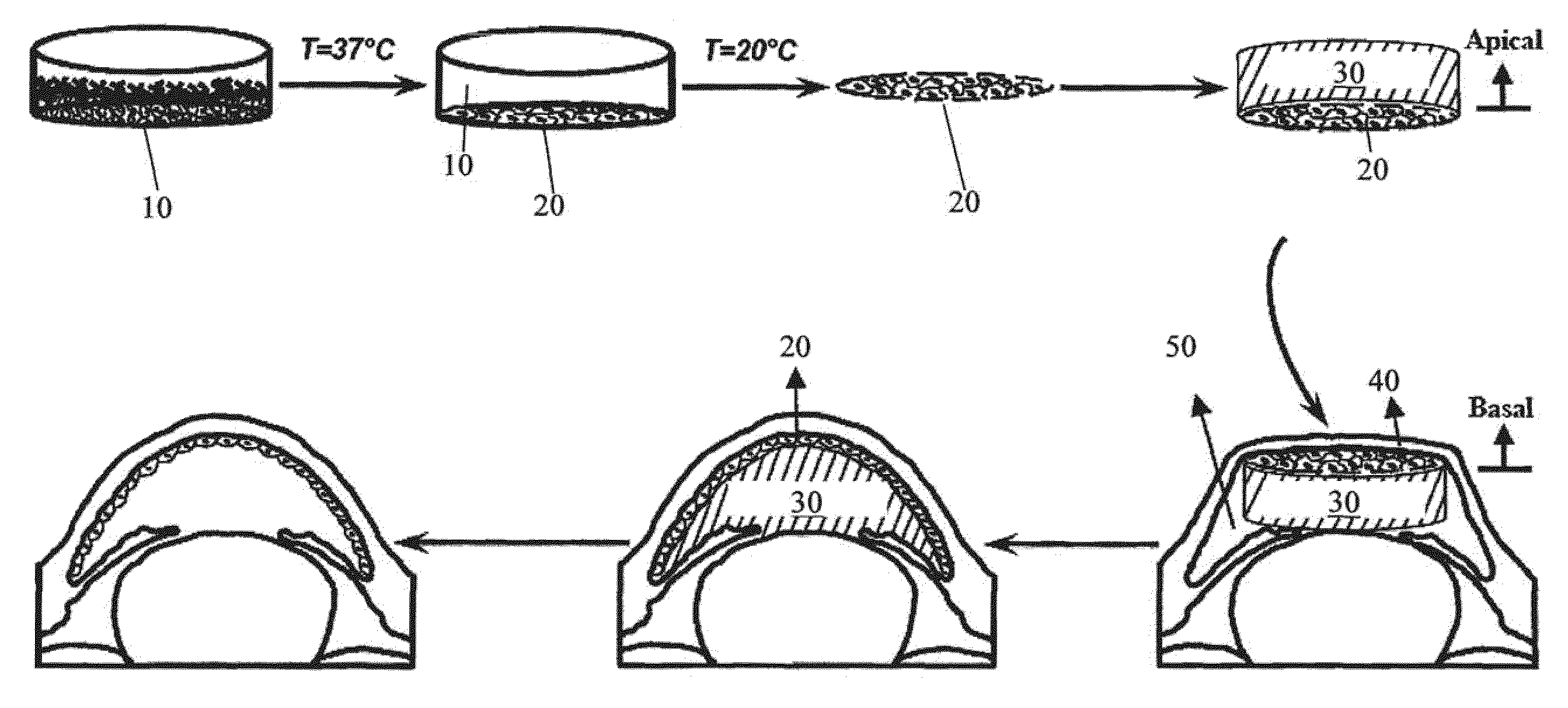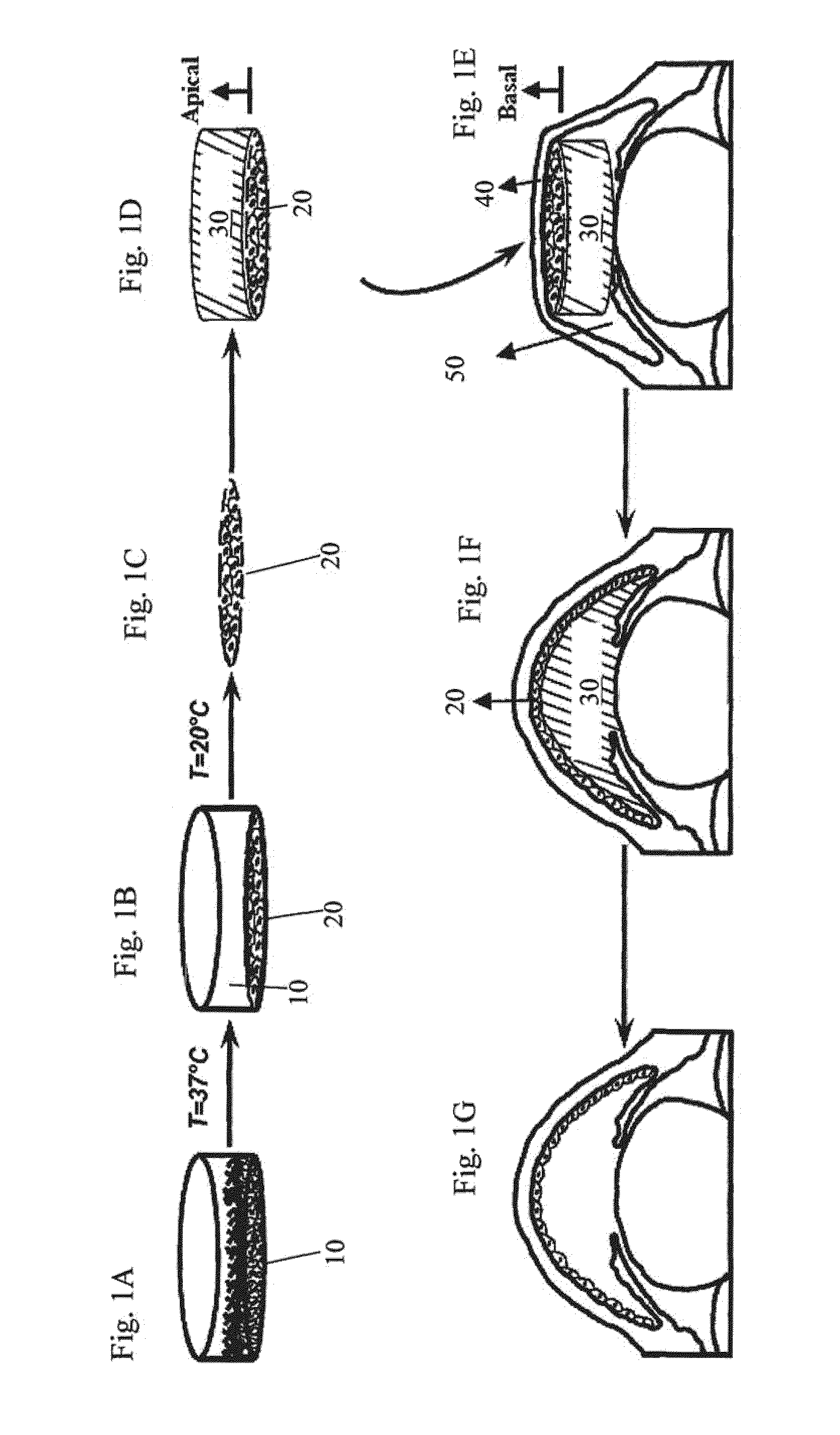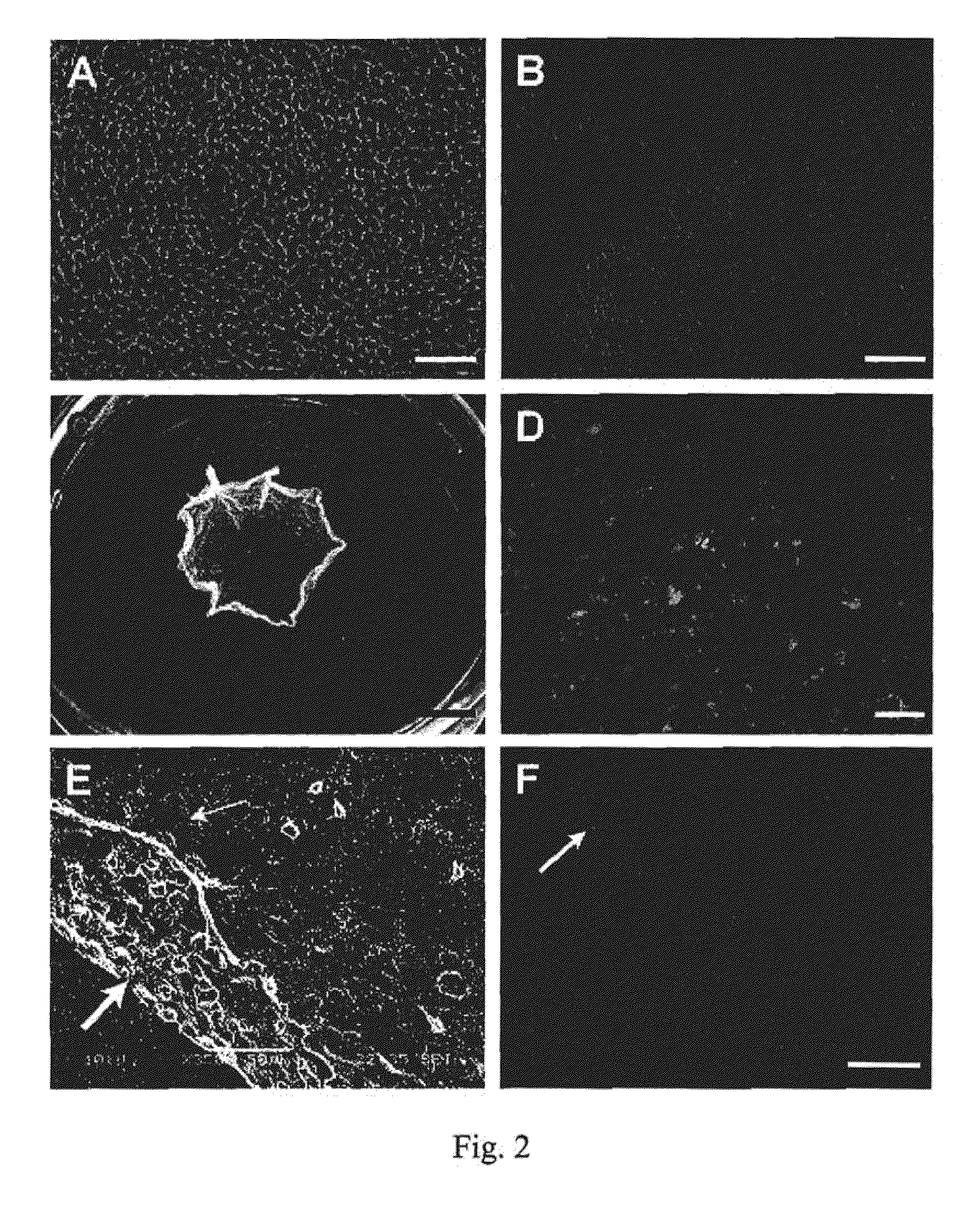Biopolymer-Bioengineered Cell Sheet Construct
a technology of bioengineering and cell sheet, applied in the field of biopolymerbioengineered cell sheet construct, can solve the problems of fibroblast overgrowth between fibroblasts, unstable attachment of cell carrier membranes to corneal stroma, and limited trial results
- Summary
- Abstract
- Description
- Claims
- Application Information
AI Technical Summary
Benefits of technology
Problems solved by technology
Method used
Image
Examples
Embodiment Construction
[0020]In the present invention, we present a novel therapy technique to transplant cultured HCECs as a cell sheet for reconstituting a corneal endothelial sheet in vivo. As shown in FIGS. 1A to 1E, an intelligent cell culture substrate 10 is prepared by surface modification with a thermo-responsive polymer such as poly(N-isopropylacrylamide) (abbreviated as PNIPAAm hereinafter). Untransformed HCECs derived from older individuals are further cultivated on the thermo-responsive surface of the substrate. Upon confluence, the tissue-engineered HCEC sheet 20 is harvested via thermal stimulus. In addition, a biopolymer carrier 30 preferably with multiple properties such as transparent, cell-adhesive, deformable, biodegradable, bioabsorbable, and biocompatible is exerted to provide a temporary support construct during and after in vivo delivery of the HCEC sheet 20 to recipient cornea 40 denuded of endothelium. The tissue-engineered HCEC sheet 20 is attached to a surface of said carrier 30...
PUM
 Login to View More
Login to View More Abstract
Description
Claims
Application Information
 Login to View More
Login to View More - R&D
- Intellectual Property
- Life Sciences
- Materials
- Tech Scout
- Unparalleled Data Quality
- Higher Quality Content
- 60% Fewer Hallucinations
Browse by: Latest US Patents, China's latest patents, Technical Efficacy Thesaurus, Application Domain, Technology Topic, Popular Technical Reports.
© 2025 PatSnap. All rights reserved.Legal|Privacy policy|Modern Slavery Act Transparency Statement|Sitemap|About US| Contact US: help@patsnap.com



